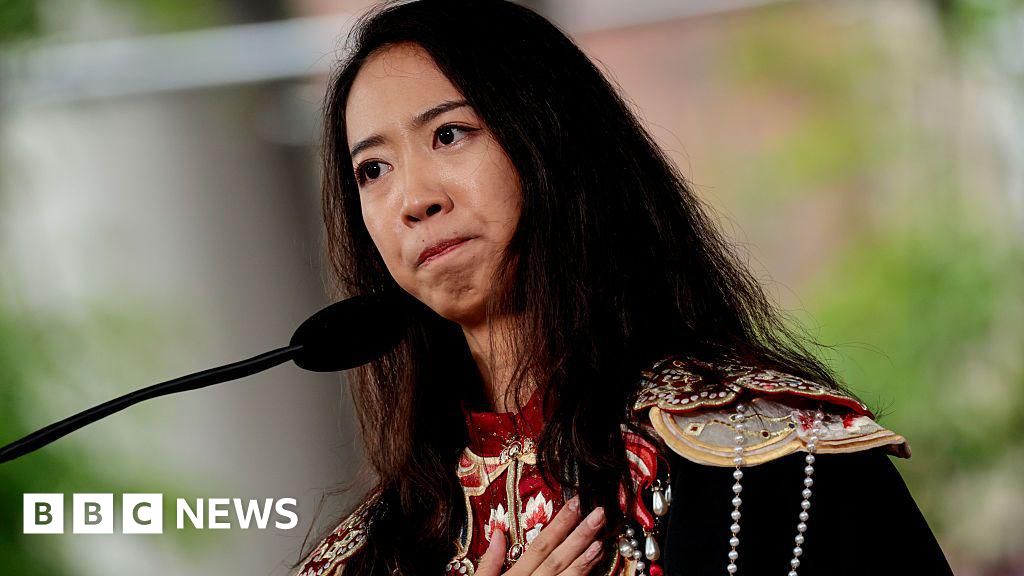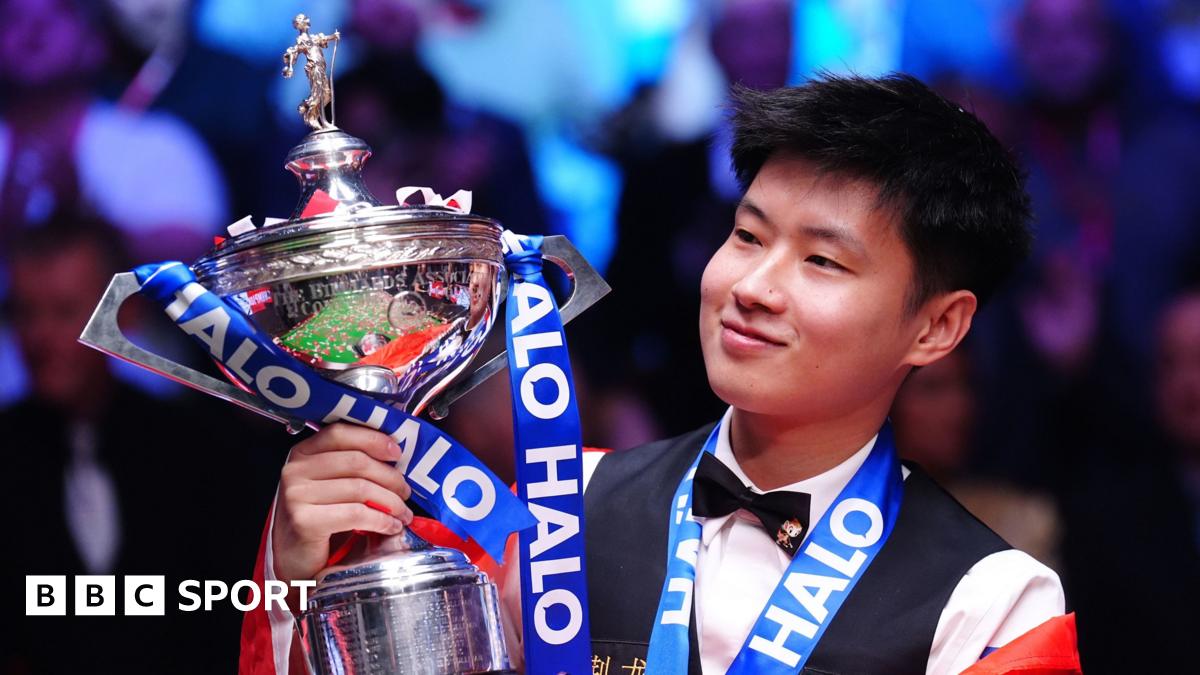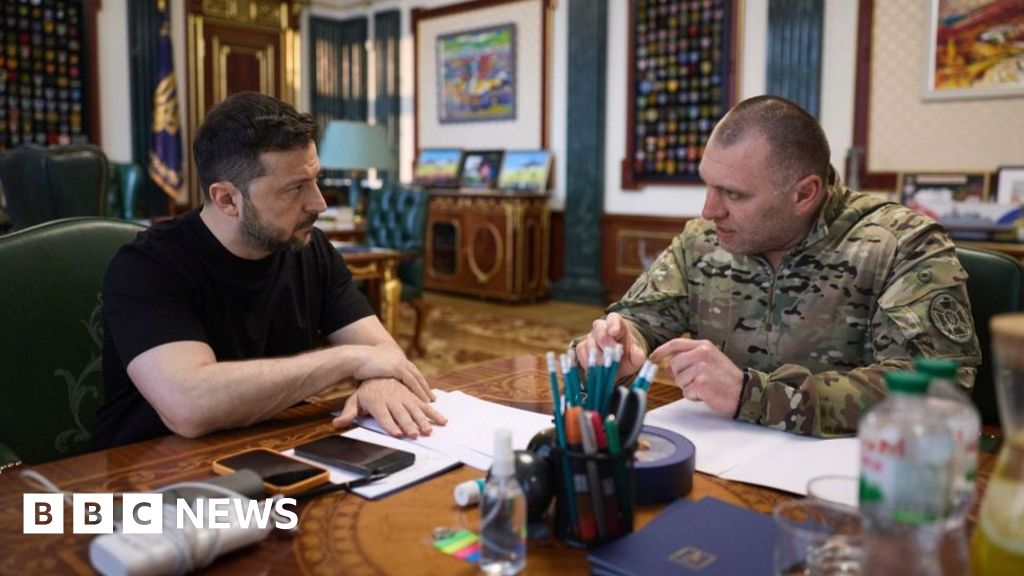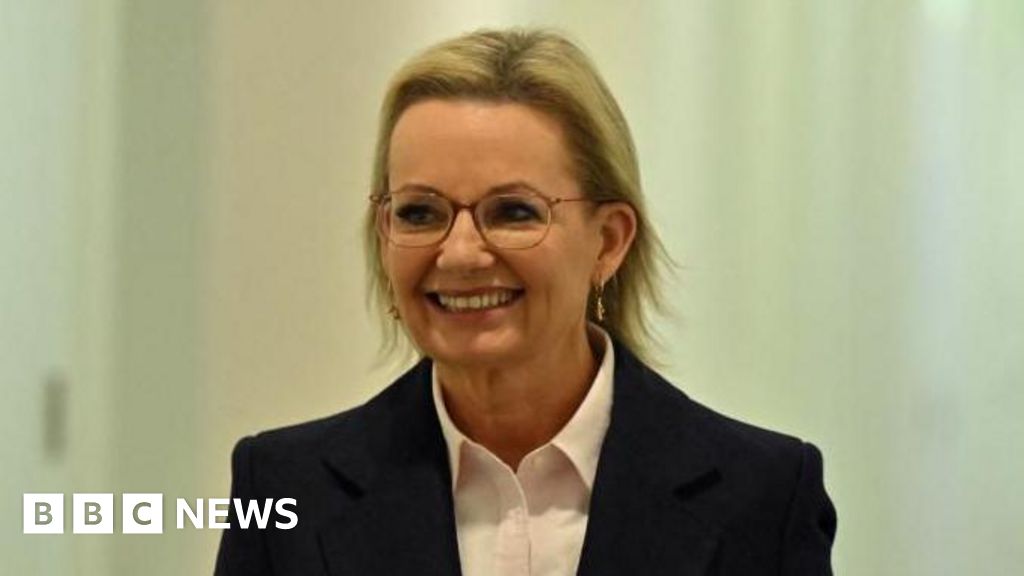
Jeremy WooJun 7, 2025, 07:30 AM ET
- NBA draft analyst and writer
Joined ESPN.com in 2023
Covered the NBA and NBA draft for Sports Illustrated from 2015-2023
We're back for another year to draw pro comparisons for ESPN's projected lottery prospects in the 2025 NBA draft, which runs from June 25-26 (8 p.m. ET on ABC and ESPN).
It's often a useful exercise, if done responsibly. Sometimes that's easier said than done, as it's a process that often invites hyperbole.
The goal here isn't to draw a perfect comparison for each of the 14 projected lottery picks -- we'd be guaranteed to be wrong. This exercise serves as a lens to think about a prospect's future role, examine his range of potential outcomes, and consider which areas of development are most critical to long-term success.
This type of thought process can help in player evaluation from a conceptual standpoint and in envisioning how a prospect's profile might fit a certain team.
With that in mind, and with the draft just a few weeks away, let's look at both high- and low-end comparisons for each prospect projected to be drafted among the first 14 picks, plus a bonus selection who is on teams' radars as a potential lottery pick.
More NBA draft coverage:
Best trade offer for the No. 1 pick?
Mock draft: Flagg to the Mavs and more
Draft assets | Top 100 rankings | Pelton's top 30

![]()
1. Cooper Flagg, SF/PF, Duke
Mock draft projection: No. 1 to Mavericks | Top 100: No. 1
High end: Jayson Tatum with more defense
Low end: Andre Iguodala with more offense
Flagg is the consensus No. 1 pick for good reason: Statistically and empirically speaking, he's on a trajectory to become one of the top wings in the NBA. The question that has been asked all season, including by NBA executives, has been about what type of heights Flagg will reach. His well-rounded offense and stellar defense give him incredible baseline versatility for an 18-year-old entering the league, something the Mavericks should be able to exploit to their advantage next season. Some around the league have likened him to a modern Scottie Pippen, while Flagg himself has said he patterns his game after Tatum, who is his favorite player.
If Flagg continues to make strides creating his own shot -- where he has flashed comfort level in the midrange but needs refinement -- the possibility of a Tatum-like scoring leap is on the table. He has improved that facet of his game over the past couple of years, becoming more comfortable from long range and leaving room for optimism that he'll grow comfortable improvising and operating off the bounce. If he doesn't evolve into a legitimate No. 1 option, he might settle best as a second star alongside a more scoring-oriented teammate.
While Flagg figures to offer more offensively than Iguodala, who never topped the 20-point-per-game mark in his career, that comparison illustrates the ways he might add value apart from putting the ball in the basket by himself. As is the case with most of these comparisons, the likely outcome is often somewhere in the middle. In his case, the range of possibilities is more exciting than anxiety-inducing for NBA evaluators.
![]()
2. Dylan Harper, PG/SG, Rutgers
Mock draft projection: No. 2 to Spurs | Top 100: No. 2
High end: Jalen Brunson but bigger
Low end: D'Angelo Russell
Harper's blend of size, power, scoring and playmaking makes him a highly attractive pro prospect, with the skill set to lead an offense as a high-usage star in a best-case scenario. Although Harper's size (6-foot-6, 215 pounds) should make him a more valuable player on the defensive end, the Brunson comp makes sense through a macro lens: Both rely on craft, creating contact and attacking angles to manipulate defenses. Brunson was a better 3-point shooter coming out of Villanova, something Harper will have to improve over time to maximize his potential. But there's a world where he gets there and becomes a foundational player and offensive fulcrum.
Harper's high floor, due in part to his size advantage handling the ball, is a big part of his appeal -- his mix of strengths makes it hard to see him flunking the NBA test. In projecting his lower-end outcomes, the odds are still that he becomes a viable starting-caliber player. He could wind up as an average shooter, and his defensive impact could be inconsistent based on past tendencies. Those possibilities would limit his impact on winning games as a No. 1 or No. 2 option, but his game could still scale down effectively.
Russell, who was the No. 2 pick in 2015 and an All-Star in his fourth season, has been a productive player, but he still hasn't figured out how to lead a consistent winning team. Harper should be impactful early on, but how his career unfolds from there will depend on context and continued improvement.
![]()
3. Ace Bailey, SG/SF, Rutgers
Mock draft projection: No. 3 to 76ers | Top 100: No. 3
High end: Michael Porter Jr.
Low end: Andrew Wiggins
Bailey is the draft's most dynamic shotmaker, a skill that makes plain his significant scoring potential. The major long-term question is how he'll harness it, with the rest of Bailey's skill set still developing. He has the size to rise and shoot over most defenders, a knack for making off-balance shots, and a stroke that projects well catching and shooting from range.
But he's not a naturally creative ball handler, tending to pick up his dribble and settle for a shot rather than weave his way around defenses, making his style predictable at times, albeit not always easy to stop.
It's difficult to bank on Bailey developing the playmaking ability and handle that would warrant heavy on-ball usage, which makes Porter Jr. an interesting player to consider as a comp. As a draft prospect out of Missouri in 2018, Porter had similar questions around his passing and handling skills, and he benefited from landing with the Denver Nuggets, a team where his shooting has been maximized by having playmakers around him, and where he hasn't been asked to step out of his comfort zone as a creator.
It's easy to see Bailey's efficiency and game transforming positively in that type of context as a second or third scorer, but it's harder at this stage of his career to squint and see a bona fide No. 1 option. If that never happens, his career could wind up more in the vein of Wiggins, who has been a productive scorer his entire career but hasn't always been an accessory to winning basketball.
![]()
4. VJ Edgecombe, SG, Baylor
Mock draft projection: No. 4 to Hornets | Top 100: No. 4
High end: Victor Oladipo
Low end: Jaden Ivey
The elevator pitch with Edgecombe centers largely around the possibility that he develops into a capable on-ball creator, where his speed, strength and elite explosiveness could best create problems for defenses.
Getting him the reps he needs to make that leap will be step one wherever he lands, but the downhill, hyperathletic slashing mold he fits makes Oladipo a valid point of comparison. It took Oladipo time to settle in in the NBA, and he broke out fully in his fifth season (2017-18) before a 2019 knee injury derailed his career. There are some similarities in their styles of play and trajectories entering the league, including the need to develop a more consistent outside shot and flesh out their ability to create offense while handling the ball.
Edgecombe has All-Star upside if everything clicks for him. While there's risk built into his profile given the level of adjustments he might need to maximize his physical tools, it's also easy to see a useful floor due to his likely value as a high-energy perimeter defender and transition player.
The Ivey comparison is a little tricky because the Detroit Pistons guard is still developing in his own right, but things started to click for him this past season before an injury in January. Slashing guards in this mold who have to learn to make good decisions with the ball often take time to find success.
The range of outcomes for Edgecombe offensively might be pretty wide, but at worst, he should still be a highly useful backcourt contributor -- adding to his appeal as a top-five selection.
![]()
5. Jeremiah Fears, PG, Oklahoma
Mock draft projection: No. 5 to Jazz | Top 100: No. 7
High end: Monta Ellis
Low end: Jerryd Bayless
Fears' profile has interesting stylistic elements that make him a tricky comp. He gets downhill and pressures the paint with more daring and craft than a typical guard his size, but he's also not a historically good 3-point shooter (28.4% on 3s at Oklahoma this past season), making for a sort of a throwback baseline archetype.
Considering his age (18) and the progress he made with the Sooners, Fears has a chance to be a dangerous scorer and playmaker, but there's a lot riding on whether he can be efficient. Either his perimeter shooting will have to progress -- a feasible thing to expect, considering his strong free throw percentages (85.1% this past season) -- or his interior scoring will have to translate well enough to prop up the rest of his game.
Although this tracks back a decade or so, Ellis is an interesting stylistic comparison as a smaller high-volume scorer and creator who struggled with turnovers and inconsistent long-distance shooting for much of his career. It's certainly possible Fears could surpass that, but it's also maybe a big step to bank on him becoming a top-end jump shooter, albeit he should improve as he gains strength and experience. If that doesn't happen, he could end up as more of a Bayless type -- a combo bench scorer in the long run, offering developmental downside given how high a team will have to select him on draft night.
Fears' major flashes of talent leave room for optimism, but there's a somewhat wide berth of outcomes given all the variables that need to go his way to become a star.
![]()
6. Tre Johnson, SG, Texas
Mock draft projection: No. 6 to Wizards | Top 100: No. 5
High end: Michael Redd
Low end: Cam Thomas, but taller
Johnson is a fairly simple prospect to understand. He's likely going to shoot it well; he's probably going to shoot a lot; and whatever else he ends up giving his future team will be gravy, not necessarily baked into their expectations.
Johnson's clean and compact stroke will make him a threat from long range, and he has flashed ability to get to it off the dribble, with a level of fearlessness required to succeed as a volume scorer but also one that can get him into trouble with shot selection at times. His efficiency inside the paint and finishing will have to improve, too.
If Johnson can come close to the type of career Redd put together (although Redd's peak in the early 2000s was eventually hampered by serious knee injuries in 2009), that would be a pretty outstanding result, and there are some similar components here. Redd became one of the top 3-point shooters of his era and shouldered a heavy workload due more to the threat of his unorthodox jumper than anything else. It's worth underscoring that Johnson is well ahead of Redd at the same age (the latter was a career 31.9% shooter from 3 at Ohio State and a second-round pick). Johnson's mechanics are far cleaner and project more safely.
It's a reasonable bet Johnson can evolve into a dynamic volume shooter -- the question is whether he can do it efficiently, and whether he'll be able to do it in a winning context. Those are similar questions that have hovered over Thomas' value due to similar tendencies he has shown four years into his NBA career (2021-25).
![]()
7. Khaman Maluach, C, Duke
Mock draft projection: No. 7 to Pelicans | Top 100: No. 6
High end: Rudy Gobert, but quicker
Low end: Daniel Gafford, but bigger
Maluach fits neatly into the rim-protecting, rim-running center archetype that has remained valuable through the NBA's various stylistic shifts of the past couple of decades. He is still learning the game and improving his defensive habits; his sheer size acts as a deterrent in the paint, with above-average mobility for his 7-2 frame that points to major defensive upside. An efficient finisher who is limited in other ways offensively, Maluach could eventually become a topflight player within his mold.
While Gobert can read as a slightly obvious comparison point for paint-protecting 7-footers, in this case, it illustrates Maluach's upside as a player who could potentially provide major defensive backbone in a winning context. It's certainly not a given that he'll reach NBA Defensive Player of the Year-caliber heights, but there's security in what he offers already, coupled with the feasible areas for improvement, particularly if he adds a 3-point shot.
Maluach's floor as a useful contributor feels pretty sound regardless: Centers with his sheer dimensions, above-average mobility and role awareness -- such as the comp to Gafford -- tend to find their place in the league.
1:52
Duke's Khaman Maluach a player to watch in the NBA draft
Duke big man Khaman Maluach, who came up through the NBA Academy Africa, is a player to watch in the NBA draft.
![]()
8. Kon Knueppel, SG/SF, Duke
Mock draft projection: No. 8 to Nets | Top 100: No. 8
High end: Desmond Bane
Low end: Joe Harris
Knueppel has a case as the best shooter in the draft, but it's the breadth of his all-around offensive game that has elevated him as a potential top-five pick. NBA teams were pleasantly surprised by Knueppel's decision-making and passing acumen at Duke, where he succeeded in a large role that required him to facilitate offense and space the floor at a high level. His average athletic profile -- he's not especially fast or quick -- is the primary concern in his projection, potentially capping some of his high-end outcomes if he's not able to create elite-level offense.
Bane was an undervalued draft prospect in 2020 coming out of TCU, where he was a career 43.2% 3-point shooter but was viewed as an average athlete with short arms who lacked big-time upside. He outkicked those expectations fast, becoming a crucial player for the Grizzlies in his second season, with Memphis investing in his skill set and the chance he could become more than simply a 3-and-D player, giving him opportunities to make plays and shoulder more responsibility. Although he won't sneak up on anyone the way Bane did, Knueppel's best-case scenarios fall along those lines.
Considering Knueppel's age (he turns 20 on Aug. 3, whereas Bane played four years in college), his career peak could surpass Bane's in the right situation, adding to NBA teams' bullishness on his future. If things don't quite click for him as a shot creator deserving of heavy bandwidth, Knueppel should still be a top shooter who plays valuable minutes on good teams in a lesser capacity, similar to Harris.
![]()
9. Collin Murray-Boyles, PF/C, South Carolina
Mock draft projection: No. 9 to Raptors | Top 100: No. 14
High end: Al Horford
Low end: Xavier Tillman
Murray-Boyles projects as a solid gadget player in the frontcourt, capable of playing all over the floor on offense thanks to his intelligent passing, guarding multiple positions using his length, plus his physicality and toughness. Maximizing his potential depends on the development of his questionable 3-point shot; if he can present a threat from outside, it'll help cover for his lack of ideal size at power forward.
If his shot develops, Murray-Boyles could wind up in the vein of a modern Horford -- a versatile big who can be instrumental to winning as a defensive stalwart with complementary offensive utility.
If Murray-Boyles were to completely stagnate at the NBA level -- an unlikely scenario, considering his age (he turns 20 on June 10) and trajectory -- he should still hold down a spot on a roster as a useful depth player à la Tillman, who shared some of his intrinsic strengths but was older and far less mobile coming out of Michigan State.
0:31
Collin Murray-Boyles makes a great defensive play for the steal
Collin Murray-Boyles makes a great defensive play for the steal
![]()
10. Kasparas Jakucionis, PG, Illinois
Mock draft projection: No. 10 to Rockets | Top 100: No. 10
High end: Austin Reaves
Low end: Delon Wright
Jakucionis is a savvy playmaker as a 6-6 guard, with the instincts and skill level to handle the ball and an improving shooting stroke. Reliant on pace, timing and improvisation instead of top-end speed, he excels in screen situations and plays an unselfish style that should allow him to succeed whether or not he develops into a full-time lead guard. He has to improve his ball security (3.7 turnovers per game) and 3-point shooting (31.8%), but his demanding role at Illinois required him to take risks and contributed to some of those inefficiencies.
It's feasible Jakucionis will wind up valued similarly to Reaves, another crafty combo guard with whom he shares stylistic similarities. Reaves entered the NBA at a much older age and worked his way into a mainstay for the Los Angeles Lakers in short order. Jakucionis might take longer, but he is well ahead of where Reaves, who played four years in college and went undrafted out of Oklahoma, was at the same age.
And in a worst-case scenario, his well-rounded skill set and ability to play both guard spots should still warrant a long-term spot in the NBA as a reserve.
![]()
11. Egor Demin, PG/SG, BYU
Mock draft projection: No. 11 to Trail Blazers | Top 100: No. 11
High end: Deni Avdija and Josh Giddey
Low end: Kyle Anderson
It's easy to see the appeal and sheer talent Demin brings as an oversized playmaker, with arguably the best passing vision in the class. Those types of players are ever-popular, with NBA teams coveting size and feel on the perimeter that can scale into an array of roles.
There are two key factors in Demin's projection: How much time he'll earn handling the ball and his consistency from long range. His below-average foot speed and streaky 3-point stroke create some risk factors. He's not quick creating off the dribble and will need to keep defenses honest with his shot to maximize his pathway to minutes.
Although not perfect comparisons, Giddey, a historically below-average shooter who is at his best making plays with the ball, and Avdija, who has settled in the past couple of seasons as a multiskilled off-ball forward, can be used to illustrate different roles Demin could eventually settle into. Whether he's capable of playing as a quasi-lead guard or adds more value as a connective player away from the ball remains to be seen, but both pathways are feasible depending how he develops.
If his development stagnates and doesn't lead to a top rotation role, he could still provide long-term utility depth, similar to the way Anderson has for much of the past decade.
![]()
12. Derik Queen, C, Maryland
Mock draft projection: No. 12 to Bulls | Top 100: No. 11
High end: Alperen Sengun
Low end: Sandro Mamukelashvili
Queen brings a lot to the table offensively, with the face-up skills and passing ability to play all over the floor and facilitate good offense. The success of players such as Sengun, who fell into the teens on draft night in 2021 and was viewed as an unorthodox prospect, helps lay the groundwork for Queen's potential. He needs to become a more aggressive rebounder and engaged defender -- two things that would be aided by improving his frame and conditioning. He also needs to develop a more reliable 3-point shot.
There's a place for skilled, offensive-minded bigs in today's NBA, but there's also a level of risk built in when relying on players with subpar physical and defensive skills, something considered in how teams project Queen's value moving forward. If he doesn't maximize his ability and develop into a cornerstone for a team, at worst, his talent and basketball IQ will still help him find a role.
Mamukelashvili, an offensive-minded big who has settled into a deep bench role in the NBA, is an extreme case -- Queen is far more talented -- but that comp is meant to underscore the downside if Queen is unable to stay on the floor defensively. The most likely outcome is in the middle.
![]()
13. Joan Beringer, C, Cedevita Olimpija (Slovenia)
Mock draft projection: No. 13 to Hawks | Top 100: No. 15
High end: Clint Capela
Low end: Jaxson Hayes
Beringer's projected NBA role is simple and proven: He is going to catch lobs, rim-run, protect the paint and potentially switch a little bit defensively. Considering he doesn't turn 19 until November and has been playing basketball for only three years, NBA teams see attractive upside thanks to his strong physical tools and above-average agility for a young center. He's still very early in his development, which builds in some risk but also creates a long runway for Beringer to be brought along by his next team as a potential long-term starter at the 5.
When describing this specific mold of center, Capela is kind of the classic point of reference. Although Beringer isn't likely to space the floor or threaten with his jumper, these types of bigs can still succeed with shooting and playmaking around them, capable of finishing plays and posing a threat around the basket without designed touches.
Hayes, who was the No. 8 pick out of Texas in 2019 due to his incredible tools and a similar upside case, has never settled in as a starting-level player, but he continues to hold a role in the NBA after six seasons -- now with the Lakers. Beringer will likely fall somewhere on this spectrum, depending on how quickly he can pick up the NBA game and get the most out of his talent.
1:11
Joan Beringer's NBA draft profile
Check out some of the highlights that have made Joan Beringer a top NBA draft prospect.
![]()
14. Carter Bryant, SF/PF, Arizona
Mock draft projection: No. 14 to Spurs | Top 100: No. 12
High end: Trey Murphy III
Low end: Royce O'Neale
Bryant's appealing combination of perimeter size, defensive versatility, passing IQ and a clean shooting stroke fit into a valuable NBA archetype. He should offer lineup coverage at multiple positions on both ends of the floor, with room to grow offensively. It's hard to expect a huge leap from Bryant in terms of creating his shot; major gains in that department could put him on a trajectory similar to that of Murphy, another late-blooming 3-and-D type who took time to blossom as a scorer.
Admittedly, this comparison would have been better before Murphy's unheralded scoring leap last season in New Orleans. It's hard to expect that level of output from Bryant, but he has time. If he can develop into a higher-volume threat from distance, he could add value even if he never cracks the 20-point threshold like Murphy just did.
And if Bryant were to stagnate as merely a useful bench player, he could still profile as a bigger version of O'Neale, who has filled in gaps and shot it well at both forward spots for much of his career.
Bonus comp!
Noa Essengue wasn't projected in the lottery in our most recent mock, but he has moved into the top 10 on our Top 100 rankings and thus deserves a mention here.
![]()
15. Noa Essengue, PF, Ratiopharm Ulm (Germany)
Mock draft projection: No. 15 to Thunder | Top 100: No. 9
High end: Pascal Siakam
Low end: Jarred Vanderbilt
Essengue has increasingly made a case for himself over the past few months in Germany, displaying tangible strides in consistency and motor and playing an active style that has been additive to winning. Still just 18 years old, Essengue has a combination of size, mobility, explosiveness and projectable frame that gives him a wide array of pathways to ultimately succeed in the NBA. Forwards in his mold who defend multiple positions, add value on the glass and can step out onto the perimeter comfortably are hard to find.
If Essengue can build off this season, he can become an excellent NBA player who relies on his motor and physicality, while improving his skill level over time, similar to Siakam. Essengue has been valuable without needing focused touches, shows good instincts in the run of play and finds ways to produce. A big offensive leap would still need to happen for him to maximize his potential, particularly as a perimeter shooter, where he still struggles with consistency.
If an offensive breakthrough doesn't happen for him, Essengue should still be a useful role player, offering rebounding and defensive value off the bench similar to the way Vanderbilt has.


















































